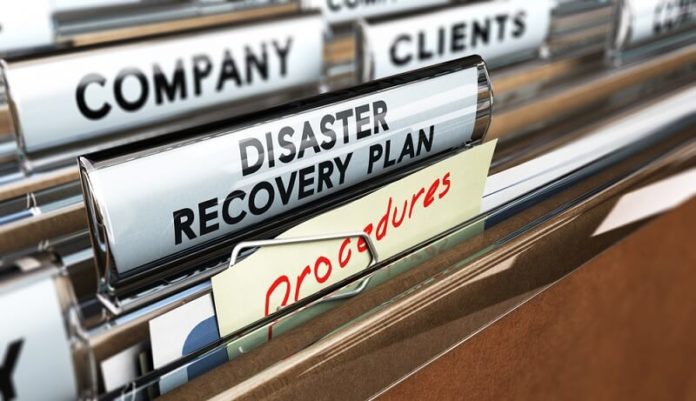As we emerge from a year of lockdown for businesses and consumers, most small business owners are looking forward to returning to “normal” or the “new normal” as soon as possible. But before you get back to business, you must prepare now for the next emergency.
Hopefully, the next disaster won’t be a global pandemic, but your business may be at risk from destructive hurricanes, tornados, floods, earthquakes, fire, or more, depending on where you live.
Start by reviewing the plan you had before COVID-19 hit (if you had one) and identify what worked for you in the past year and what did not. Chances are, you’ll need to develop a new disaster preparedness and recovery plan.
Is your small business prepared to survive a disaster?
First, realize every business is at risk. Even if your business is not a victim of a natural disaster, something as seemingly trivial as an electrical short in your building or the one next door can start a fire that threatens your small business’s future.
So let’s get started creating an effective plan to help secure your company’s future. Here are some tips:
1—Understand your risk. The types of natural disasters that are most likely to strike your business depend on where you are located. In southern California, where my company is, blizzards and hurricanes are not a concern, but earthquakes and wildfires are.
2—identify the impact on your business. If you were the victim of a natural disaster, how would it impact your ability to run your business? Think about what would happen if your data were destroyed, your equipment was damaged, your employees couldn’t get to work, your customers and clients couldn’t access your building? What if your actual store, restaurant, or office were destroyed?
3—Develop a plan. All businesses should digitize their data in the cloud. That way, no matter what befalls your location, your data will always be safe and accessible. Then, focus your plan on the likely losses your business would face. It’s also crucial your plan protect your physical location, your customers, and your staff.
Concentrate on the core functions of your business. Not everything is equally important. In a disaster, you’re less likely to create new marketing ideas but will need to focus on sales and customer outreach.
4—Protect your employees. Disasters could strike during work hours, so protecting your staff and customers/clients is a top priority. Develop emergency plans in case you need to vacate the building immediately and practice them (like fire drills when you were in school).
Give key employees responsibility for specific tasks, such as making sure the building is clear, calling the fire/police department, etc. Create a phone tree so everyone can stay informed if the disaster happens after hours or lasts for days or weeks.
All businesses should stockpile supplies like water, food, blankets, flashlights, chargers, radios, and batteries for emergencies.
5—Tech check. Dealing with the coronavirus pandemic has helped many small businesses upgrade their tech. Chances are your company has already implemented cloud-based software solutions and has a robust videoconferencing tool in place. These will come in handy if the disaster keeps you all at home or in other remote locations.
6—Craft a communications plan. Communication before, during, and after a disaster strikes is critical. It’s more than the employee phone tree I mentioned above. You’ll need to communicate with your suppliers, vendors, and key advisors like your accountant and insurance agent. Keep your list of contacts, their phone numbers, and email addresses updated, so nothing slips between the cracks. Of course, the list should reside in the cloud so you can access it from wherever you are.
7—Business continuity. The whole point of developing a disaster preparedness plan is so your business can ride out the disaster and continue to operate. Business continuity plans do more than help you maintain your business. It also shows your customers and clients they can trust you to be there for them and enables you to keep your reputation intact.
Having a plan before you need it saves precious time if you need to implement it, limits any possible financial harm, and gets you back on your feet faster.
When formulating your plan, ask yourself, what if you can’t access your office, your store, your restaurant, your business for weeks or even months? Again take what you learned from the past year and apply what worked. You should know how to operate remotely. You and your team should have the equipment in place to do just that. If you’re a retailer, make sure your e-commerce site is still going strong and your supply chain is diversified.
8—Are you covered? Make sure you have the proper insurance coverage. Work with your insurance agent to identify the significant areas of risk so you can make sure you’re adequately covered. Find out if you need specialized coverage for earthquakes or floods, for example.
And, of course, keep your insurance and other important documents in the cloud.
9—Keep it current. Your plan will not help you if you create it and put it in a drawer. Review and revise your plan as needed.
Constant communication is key to your survival. Your team, customers, suppliers, and vendors need to know what’s going on at all times.
10—Take advantage of resources. There’s a lot of information available to help you. Check out the Small Business Administration, Ready.gov, FEMA, and SCORE.
Taking the time to do some advance planning will help you prevent a potential disaster from disrupting or destroying your small business.
Sam Meenasian is the Operations Director of USA Business Insurance and BISU Insurance and an expert in commercial lines insurance products. He has more than 10 years of experience and knowledge in the commercial insurance industry and contributes his expertise to educate and secure online business insurance for thousands of clients within the Insurance family.
Disaster small business planning stock photo by Olivier Le Moal/Shutterstock







